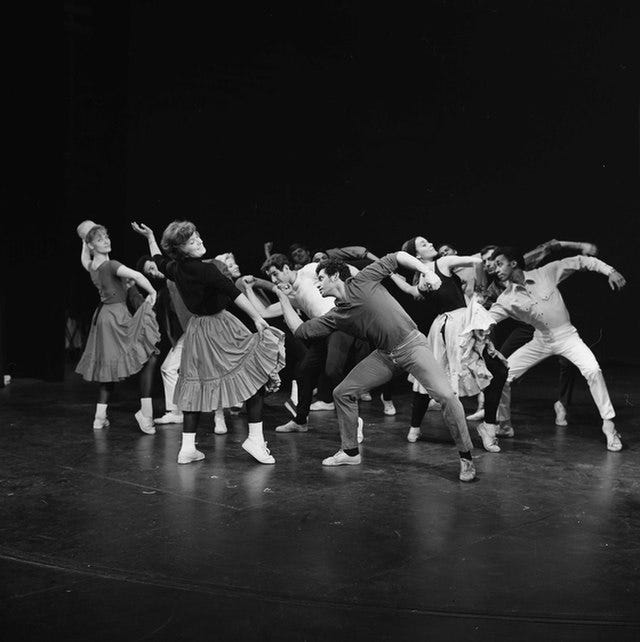In the late 1700s, the artist Franz Xaver Messerschmidt stopped creating the lovely portrait busts he was known for and sculpted a gallery of 64 character heads, caught in various states of grimace and horror. They say the artist had suffered a “confusion in his head,” and that his face had stuck in one expression from days of being his own model. Sometimes when I watch “Cool,” Jerome Robbins’ magnificent jazz ballet in the 1961 film version of West Side Story, I randomly stop the video, study the frozen frames. Pause. Six Jets wince mid-head roll like their necks are breaking. Stop. Baby John, Ice, A-rab & Action mid-air, in a suspended crouch as if they’ve hung themselves. Stop. The whites of Ice’s eyes. Start.
What kind of dance does a pandemic do?
It is a dance made on cement and gasoline and shin splints.
It claps 22 times.
It refuses to wear knee pads.
It is a double airplane turn in dirty white low-top Chucks.
It snaps its fingers 141 times, because they say tension is released when it can hear itself.
It is a dance of Anybodys, bound to a dissonant 12-tone fugue.
It makes a fist and punches its own hand.
“Cool” was shot in a low-ceilinged parking garage in Hollywood. The Jets’ leader, Riff, has just been killed, and the Jets strategize—you wanna live in this lousy world?—sucking out all the air. I have watched this clip so many times that when I look out my window, the dancers transfer to the 20th Street parking lot under the FDR Drive. This is good because night is closer when they stretch their arms up, fingers wide in five-pointed stars. This signature Robbins move is punctuated with a snap, a sssss or POW!, right on the East River popping like rogue fireworks bought out of the back of a pick-up truck in Queens. Because everyone knew there would be no 4th of July this year.
Pune Dracker writes, edits, runs and dances in New York City.
Jerome Robbins (1918-1998) was born New York City. He began his work on West Side Story in 1957, putting him on the map as a skilled choreographer and perfectionist. He later won an Academy Award alongside co-director Robert Wise for their work on the film. A towering figure in American dance and theater history, with numerous production credits, Robbins became ballet master at New York City Ballet in 1972. One of his best-known ballets is Dances at a Gathering.


